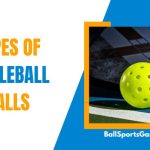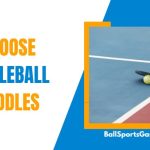Pickleball is a dynamic sport that demands agility, coordination, and endurance. When you engage in pickleball, your body activates various muscle groups. Recognizing the specific muscle groups involved can assist you in customizing your workouts and enhancing your on-court performance.
In this blog post, we are going to discuss what muscle groups are you working in pickleball by categorizing them into primary and secondary muscle groups used while playing pickleball. We are also going to explain what are the exercises that you can practice for pickleball muscles used and some essential tips for managing muscle soreness in the game.
Primary Muscle Groups Used While Playing Pickleball
Pickleball is a paddle sport that combines elements of tennis, badminton, and table tennis. It is played on a court with a solid paddle and a plastic ball. While playing pickleball, several muscle groups are actively engaged. Here are the primary muscle groups used while playing pickleball:
Lower Body Muscles:
Quadriceps: The muscles situated on the front of your thighs play a crucial role in extending your knees when you engage in activities like moving, lunging, and swiftly changing directions on the court.
Hamstrings: The hamstrings, situated at the back of your thighs, aid in bending your knees, stabilizing your movements, and generating power during dynamic actions like jumping.
Glutes: The gluteal muscles, including the gluteus maximus, medius, and minimus, are responsible for various hip movements, such as extending the hip backward, moving the leg away from the body, and rotating the hip. These muscles play a vital role in essential movements like lunging, squatting, and quickly changing directions during pickleball.
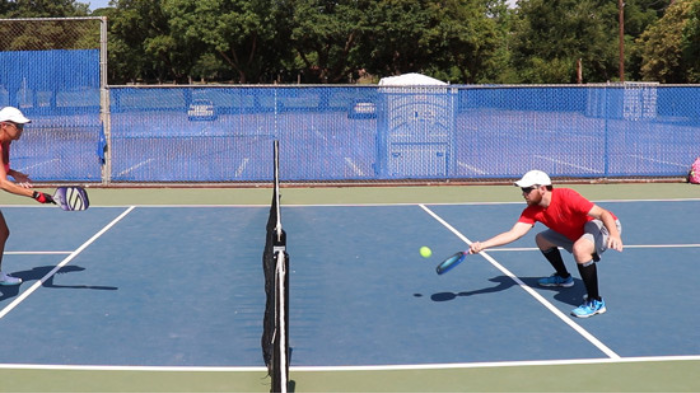
Core Muscles:
Abdominals: The muscles in your core, such as the rectus abdominis (commonly known as the six-pack muscles) and obliques, helps to keep your torso stable, support your balance, and generate power for rotational movements during shots and quick turns.
Lower Back: The erector spinae muscles in the lower back helps to stabilize the spine and maintain proper posture while playing pickleball.
Upper Body Muscles:
Deltoids: The deltoid muscles, which are found in the shoulders, come into action when you swing the paddle, perform serves, and execute overhead shots.
Rotator Cuff: The rotator cuff comprises four muscles: supraspinatus, infraspinatus, teres minor, and subscapularis. It plays a crucial role in stabilizing the shoulder joint and helps with shoulder rotation and arm movements.
Forearms: The muscles in your forearms, especially the flexors and extensors, are actively involved in gripping the paddle and generating power when you take shots.
Biceps And Triceps: During the game of pickleball, your upper arm muscles, particularly the biceps and triceps, plays a vital role in performing paddle swings, serves, and shots with active involvement.
It is important to note that the intensity and specific muscle engagement may vary based on the player’s style, shot selection, and movement patterns on the court. To enhance performance and reduce the risk of injuries while playing pickleball, it is highly recommended to engage in warm-up exercises, stretching routines, and maintain correct form throughout the game.
Secondary Muscle Groups Used During the Pickleball Game
Apart from the main muscle groups, there are several additional muscle groups that come into play during a game of pickleball. These secondary muscles provide support to the primary movers and contribute to overall performance and stability on the court. Here are some of the secondary muscle groups used during pickleball:
Calves: The calf muscles (gastrocnemius and soleus) assists in providing stability and propulsion during movements such as running, jumping, and quick changes of direction.
Hip Adductors: The muscles on the inner side of the thigh contribute to hip adduction, which involves bringing the leg towards the midline of the body. These muscles actively engage in lateral movements and plays a significant role in maintaining balance during pickleball.
Latissimus Dorsi: The lats, located in the back, contribute to shoulder extension, internal rotation, and stabilizing the shoulder during paddle swings and overhead shots.
Trapezius: The trapezius muscles in the upper back and neck area stabilizes the shoulder girdle and assist with postural control during paddle swings and overhead shots.
Neck Muscles: Muscles in the neck and upper back region helps to maintain proper head and neck alignment, especially during overhead shots and serves.
Wrist Flexors And Extensors: These muscles in the forearm assists in controlling the paddle and wrist movements required for shots, serves, and quick changes in grip.
Ankle Stabilizers: The muscles around your ankle, like the peroneals and tibialis anterior, helps you to keep your balance, stability, and allow for quick changes in direction when you move sideways during pickleball.
Although the primary muscle groups are primarily responsible for generating movement, the secondary muscle groups plays a vital role by providing support, stability, and coordination. This assistance helps to enhance performance and reduce the risk of injury during pickleball.
Exercises to Practice for Pickleball Muscle Groups
Pickleball is a sport that requires a combination of strength, agility, and endurance. To target the muscle groups used in pickleball, you can incorporate the following exercises into your training routine:
Lower Body:
Squats: Squats are a great exercise that targets the muscles in your thighs (quadriceps and hamstrings), buttocks (glutes), and calves. You can perform squats using only your bodyweight, or you can make them more challenging by adding weights.
Lunges: Lunges are an excellent exercise that focuses on targeting and strengthening the quadriceps, hamstrings, glutes, and calf muscles. Including lunges in your workout routine and performing them in different directions mimics the lateral and forward movements commonly used in pickleball. This comprehensive lower body workout directly enhances your performance on the pickleball court.
Jumping Squats: Jumping squats are a type of exercise that combines squatting movements with explosive jumps. This exercise strengthens the muscles in your legs, including your thighs, buttocks, and calves, while providing a cardiovascular workout. Engaging in jumping squats can benefit your pickleball performance.
Core:
Planks: Planks are great for strengthening your core muscles, including the abdominals, lower back, and stabilizing muscles. They help to improve core strength and stability, which are essential for pickleball movements.
Russian Twists: Russian twists focus on the oblique muscles and abdominals. By performing twisting motions, they enhance rotational strength and stability, mimicking the movements involved in pickleball shots.
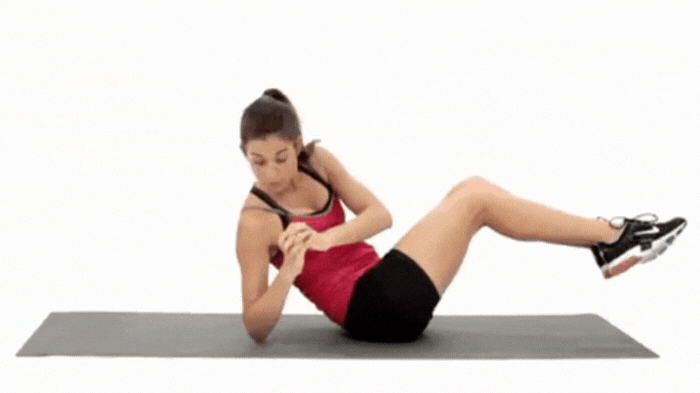
Upper Body:
Push-Ups: Push-ups target the muscles in your chest, triceps, and shoulders. They are effective for developing upper body strength, which is crucial for executing shots and volleys in pickleball.
Rows: You can do rows using resistance bands or weights to target the muscles in your upper back, such as the deltoids and latissimus dorsi. Strengthening these muscles enhances your overall upper body strength and stability during pickleball movements.
By incorporating these exercises into your training routine, you can strengthen the specific muscle groups used in pickleball. Remember to start with proper form and gradually increase the intensity or resistance as you progress. Regular practice will help you to improve your performance on the pickleball court.
Tips for Muscle Soreness Management in Pickleball
Muscle soreness is a common occurrence when you start or intensify your pickleball training. Here are some tips to help manage muscle soreness:
Warm-Up And Cool Down: Before starting your pickleball session, engage in a proper warm-up routine to increase blood flow and prepare your muscles for activity. Afterwards, cool down with some light stretching to promote muscle recovery.
Gradually Increase Intensity: To reduce muscle soreness, it is crucial to avoid suddenly and dramatically increasing the intensity of your training. Instead, gradually increase the difficulty of your workouts over time. This allows your muscles to adjust and lowers the risk of experiencing excessive soreness.
Stay Hydrated: Proper hydration is essential for muscle function and recovery. Drink plenty of water before, during, and after your pickleball sessions to prevent dehydration and support muscle recovery.
Rest And Recover: Give your body enough time to rest and recover between pickleball sessions. This allows your muscles to repair and adapt to the demands of the sport. Adequate sleep is also crucial for muscle recovery.
Incorporate Active Recovery: Engage in light exercises or activities on your rest days to promote blood circulation and alleviate muscle soreness. Activities like walking, swimming, or gentle stretching can help with recovery.
Apply Ice Or Heat: Ice packs or cold compresses can help to reduce inflammation and relieve muscle soreness. Apply them to sore areas for about 15-20 minutes. Heat therapy, such as warm baths or heating pads, can also provide relief by increasing blood flow to the muscles.
Use Foam Rolling Or Massage: Foam rolling is a self-massage technique that can help to alleviate muscle soreness and tightness. Target the areas of discomfort and roll gently back and forth to release tension. If possible, consider getting a professional massage to help relax and loosen tight muscles.
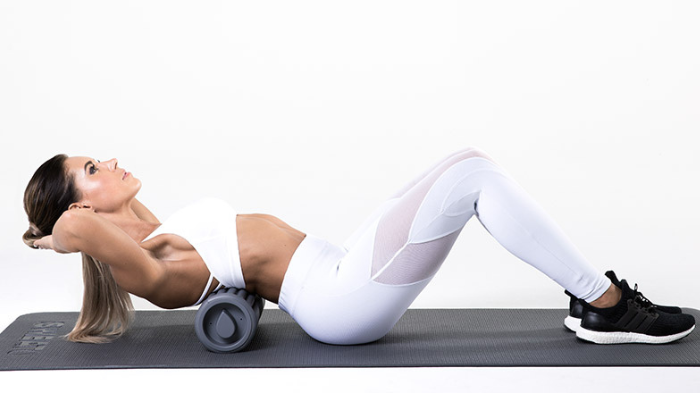
Over-The-Counter Pain Relievers: Nonsteroidal anti-inflammatory drugs (NSAIDs), such as ibuprofen, can help to reduce pain and inflammation caused by muscle soreness. However, use them sparingly and consult with a healthcare professional if necessary.
Remember, muscle soreness is a natural part of the training process, especially when starting a new activity. However, if you experience severe or prolonged pain or suspect an injury, it is important to seek medical advice.
FAQs
It is recommended to incorporate exercises targeting pickleball muscle groups two to three times a week, allowing for adequate rest and recovery.
While pickleball is a dynamic sport that engages multiple muscle groups, it primarily targets the lower, core, and upper body muscles involved in swinging and serving. However, incorporating additional exercises can help to ensure a well-rounded workout for all muscle groups.
While playing pickleball engages multiple muscle groups, it can be beneficial to incorporate additional exercises that target specific areas and enhance overall performance. Including exercises that focus on muscle groups not directly involved in pickleball, like upper body strength training, flexibility exercises, and core workouts, can be advantageous for your progress.
To minimize muscle soreness after pickleball, it is essential to properly warm up before playing, cool down afterwards, stay hydrated, gradually increase the intensity of your sessions, rest and recover adequately, and incorporate active recovery activities such as light stretching or walking on rest days.
Conclusion
Pickleball is a sport that engages various muscle groups throughout the body. By understanding what muscle groups are you working in pickleball through the primary and secondary muscle groups involved in pickleball, practicing exercises that target these muscle groups, and following tips to manage muscle soreness, you can enhance your strength, power, and endurance in pickleball.
This knowledge will also help to promote recovery after playing and improve your overall performance on the pickleball court. So, the next time you play pickleball, remember the muscle groups you are engaging and strive for a well-rounded training approach to enhance your performance on the court.


